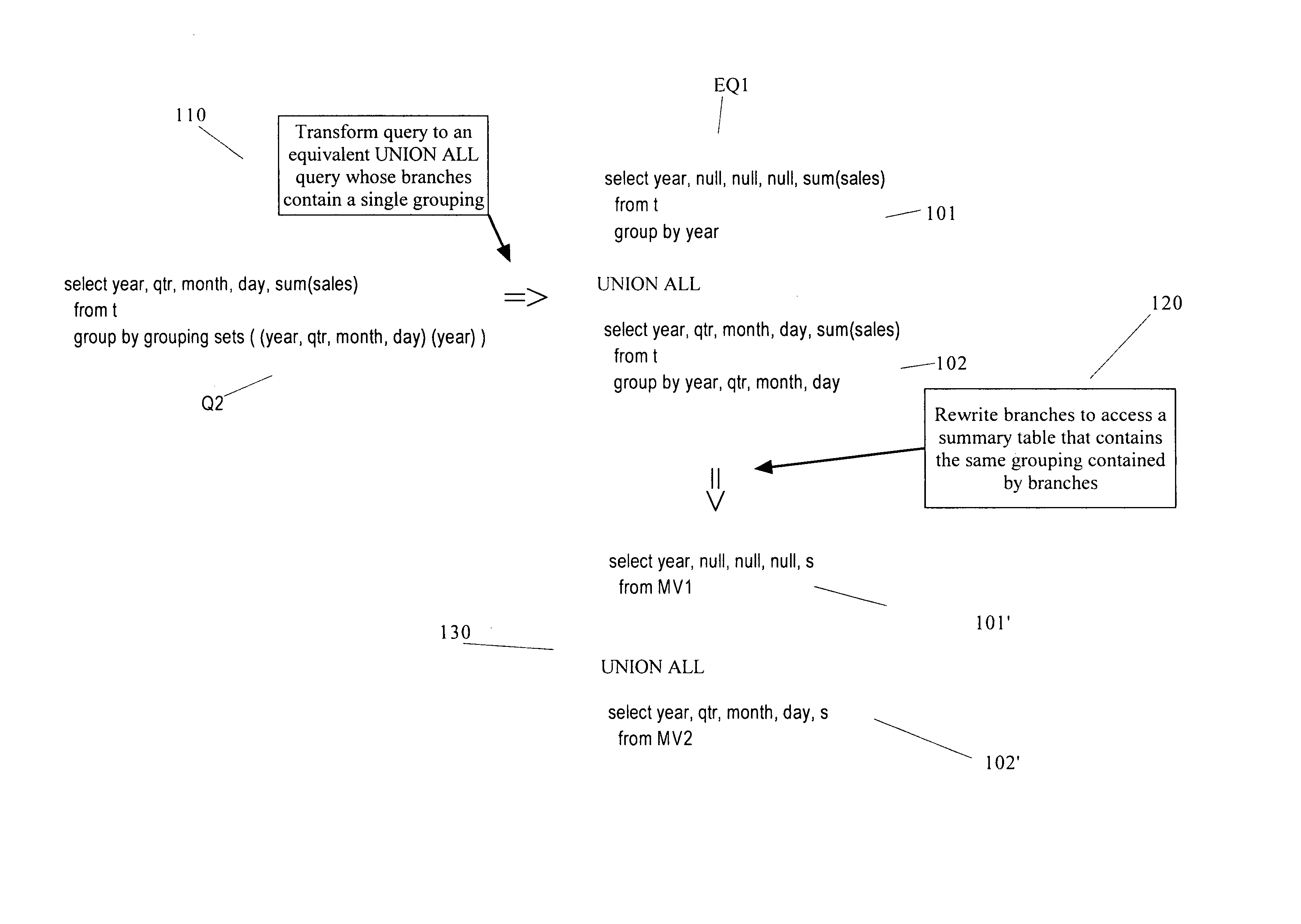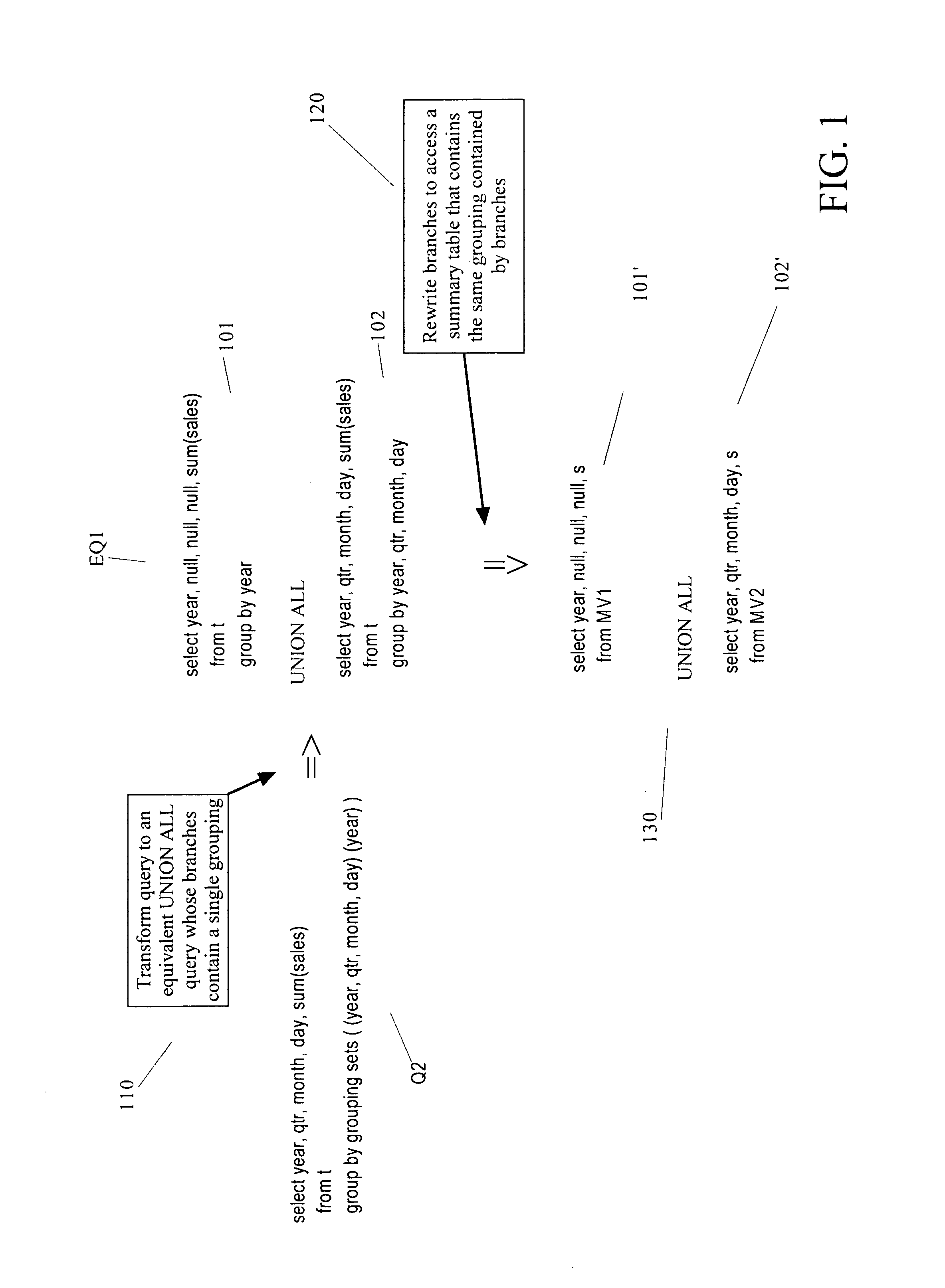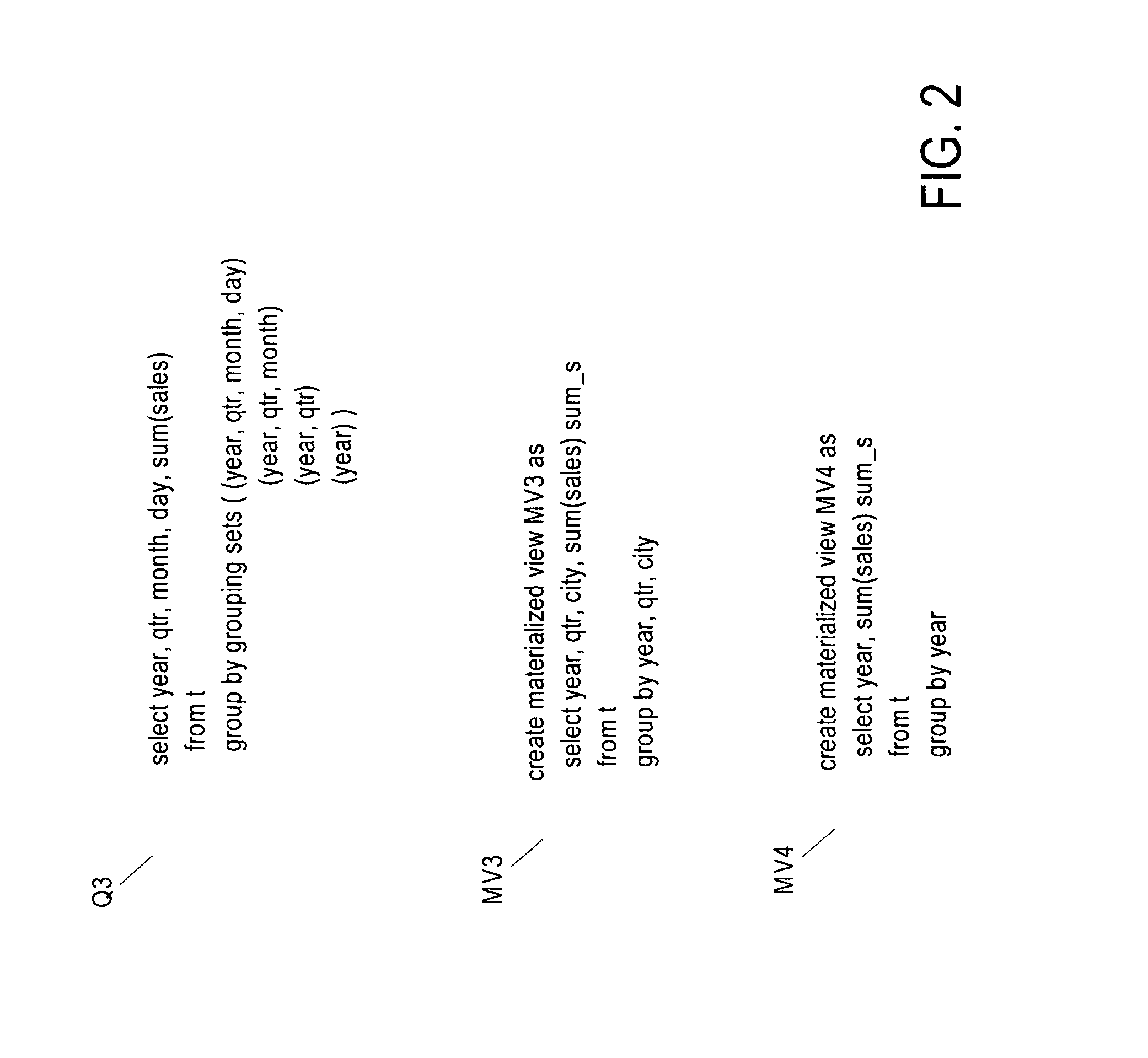Union all rewrite for aggregate queries with grouping sets
a query rewrite and grouping technology, applied in the field of database systems, can solve the problems of unacceptably long execution time of certain queries processed by the dbms, the rewrite of aggregate queries suffers from a significant limitation, and the way of computing aggregate queries is far more expensive, so as to achieve the effect of saving a lot of cost and executing more efficiently
- Summary
- Abstract
- Description
- Claims
- Application Information
AI Technical Summary
Benefits of technology
Problems solved by technology
Method used
Image
Examples
Embodiment Construction
[0050]A method and apparatus for rewriting aggregate queries is described. In the following description, for the purposes of explanation, numerous specific details are set forth in order to provide a thorough understanding of the present invention. It will be apparent, however, that the present invention may be practiced without these specific details. In other instances, well-known structures and devices are shown in block diagram form in order to avoid unnecessarily obscuring the present invention.
Overview
[0051]Query rewrite techniques are provided for rewriting an aggregate query with multiple groupings using multiple summary tables. The rewrite is accomplished by expanding the aggregate query into an equivalent UNION ALL query with multiple subqueries, each containing a single grouping. One or more of the subqueries is then rewritten to reference a summary table. Thus, a grouping of an aggregate query is derived by executing a subquery that either scans the summary table for the...
PUM
 Login to View More
Login to View More Abstract
Description
Claims
Application Information
 Login to View More
Login to View More - R&D
- Intellectual Property
- Life Sciences
- Materials
- Tech Scout
- Unparalleled Data Quality
- Higher Quality Content
- 60% Fewer Hallucinations
Browse by: Latest US Patents, China's latest patents, Technical Efficacy Thesaurus, Application Domain, Technology Topic, Popular Technical Reports.
© 2025 PatSnap. All rights reserved.Legal|Privacy policy|Modern Slavery Act Transparency Statement|Sitemap|About US| Contact US: help@patsnap.com



